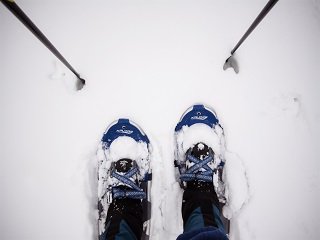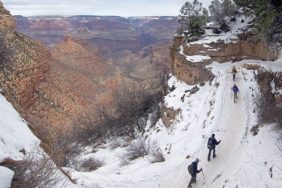 Newcomers to the outdoors can quickly lose themselves amidst a throng of activity-specific jargon. Whether you’re reading reviews online or getting advice from a sales associate, having a preexisting knowledge of the terms associated with your planned activity will help maintain clarity and keep you from being overwhelmed. Like most sports, snowshoeing comes with its own set of specific terms and I’ve listed several of them for you today, in no specific order.
Newcomers to the outdoors can quickly lose themselves amidst a throng of activity-specific jargon. Whether you’re reading reviews online or getting advice from a sales associate, having a preexisting knowledge of the terms associated with your planned activity will help maintain clarity and keep you from being overwhelmed. Like most sports, snowshoeing comes with its own set of specific terms and I’ve listed several of them for you today, in no specific order.
Snowshoe Parts
Decking: The flat surface of a snowshoe that allows you to walk on top of the snow by distributing your weight over a greater surface area. Typically made of synthetic materials.
Frame: The aluminum or wooden outer edge of the snowshoe to which the decking is attached.
Binding: The harness that attaches your foot to the snowshoe.
Pivot Point: The point under the ball of the foot where the binding is attached to the snowshoe. Also known as a toe cord.
Crampons: Toothed traction devices found on the underside of the snowshoe at the toe, under the ball of the foot, or at the heel.
Flotation: The ability of the snowshoe to keep you on top of the snow, with full pack.
Fixed Toe Cord: Attachment point of the binding to the snowshoe that springs back up with each step. Usually made of neoprene, Hypalon, or other type of synthetic material.
Rotating Toe Cord: Attachment point of the binding to the snowshoe that pivots on a metal rod so that the snowshoe tail drags or tracks behind as you walk.
Technique
Self-Arrest: Stopping your fall by planting your ice axe into the hillside with your body weight fully over the axe.
Self-Belay: Preventing yourself from falling by planting and hanging on to your ice axe as you walk.
Traverse: Crossing a slope with one shoulder on the uphill side, the other, on the downhill.
Step-Kicking: Method of ascending a steep snow slope by kicking toes into the snow, creating steps.








